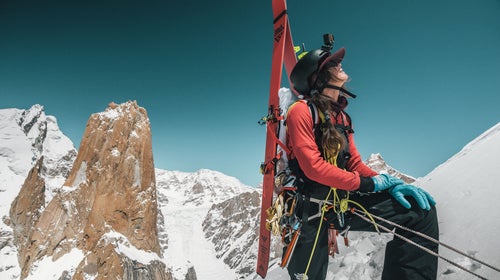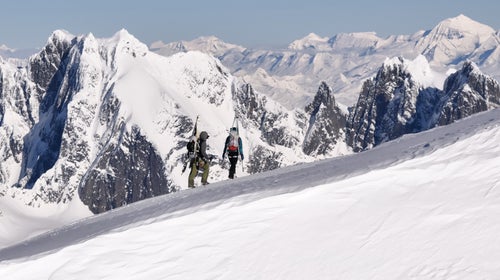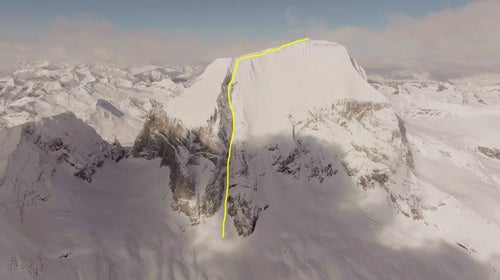Christina Lustenberger Skis the Impossible
Lusti has built a career—and a life—on toughness and a preternatural ability to ski through puckering technical terrain. Her greatest challenge may be learning to let herself be soft.
New perk: Easily find new routes and hidden gems, upcoming running events, and more near you. Your weekly Local Running Newsletter has everything you need to lace up! .
High in the thin air of Pakistan’s Karakoram Range, Christina Lustenberger paused to look up. A mere 900 feet above her, the snowcapped summit of a granite spire known as the Great Trango Tower soared to over 20,600 feet. Scaling its bulging face felt like climbing on a giant basketball, the world falling away into empty space on all sides. Her pack, pulling on her petite five-foot-six frame, was heavy with skis and climbing equipment. Her toeholds in the snow were shallow. The hanging glacier a few hundred feet to the right calved relentlessly, each time sending the energy of the place up through her feet.
She and her two expedition mates, American ski mountaineer Jim Morrison and Canadian professional skier Nick McNutt, were perched together below an enormous horizontal crevasse that stood between them and the summit like a dragon guarding a castle. They’d already been climbing mixed rock and ice for several hours. This chasm was bigger than they’d expected—probably bigger than anyone would have expected, given that this behemoth spire had only been climbed a handful of times, and only in summer. They had traveled there in April 2023. Likely no one had even thought to ski it before Lustenberger, or Lusti, as she’d been nicknamed, dreamed up this expedition.
Lusti, 39, had spent the previous decade quietly blowing open the doors of what’s possible in the mountains. The feats revealed her as one of this generation’s great explorers, one who moves through seemingly impassable terrain in remote ranges with a combination of ski mountaineering, technical alpinism, and genuine creativity. Her racing career laid a hard-charging foundation: she skis with graceful, powerful style. If you’ve never heard of her, it’s because she’s more interested in drawing improbable lines than in proclaiming her lengthening list of first descents on Instagram.
Lusti examined the problem of the crevasse. It yawned at least 25 feet wide, bisecting the full 600-foot width of the slope. To cross it would require building an anchor, belaying one of them into it to climb up the other side, then building another anchor there to create a fixed line. If they succeeded, they could possibly reach the summit that day to win an elusive prize: skiing a first descent on their first attempt.
But Lusti is as calculated as she is creative. Years ago, when the industry and her fellow skiers were just waking up to what she could do, she often thought about the inherent risk of following this path: a career-ending injury, losing friends to the mountains, the possibility of her own death and what that would mean for the people she loves. Back then there was something else, too, harder to articulate: a sudden can’t-touch-the-bottom feeling when she imagined her full potential, realizing that what she was truly capable of might be off the current map. In such terra incognita, she determined, only mastery, humility, and careful decision-making would keep her safe.
But in the months leading up to their April 2023 expedition, Lusti had been wondering whether even those cultivated qualities were enough. Her mentor, accomplished ski mountaineer Hilaree Nelson, was supposed to be here, in the Karakoram, on the team. But Nelson had been killed in a fall while skiing off the summit of 26,781-foot Manaslu, in Nepal, just five months before. The question of risk haunted Lusti anew ever since.
It was already late afternoon, leaving the trio less time than they would have liked to tackle a crux this complicated. They decided to retreat, armed now with the knowledge of the obstacles they faced.
But once she had her feet back on firm ground, the sense that the world was falling away wouldn’t disappear.







